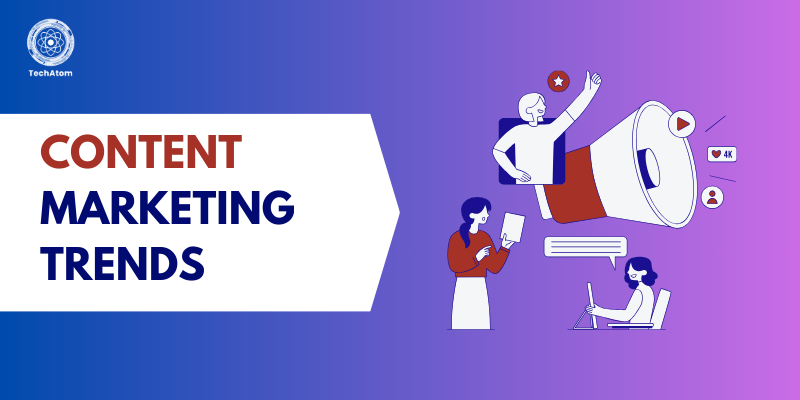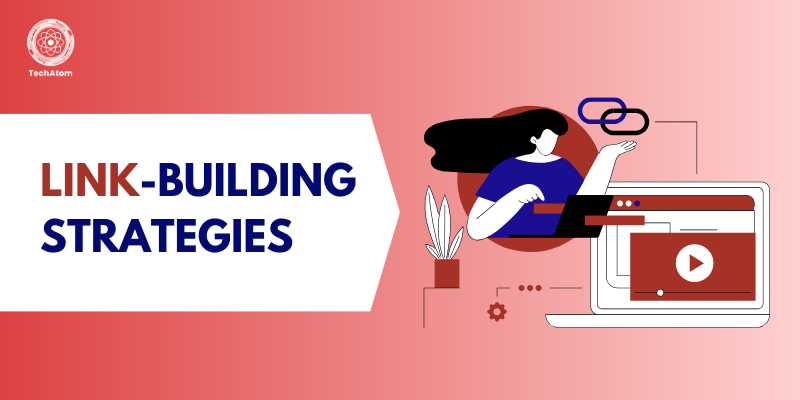The question that terrifies brands more than their sales figures is their content strategy. The marketing department is always hypervigilant about crafting compelling campaigns.
It has gone beyond the pressure of surviving in a competitive market and is now about being relatable yet precise, keeping up with AI, maintaining SEO standards, competing with influencer marketing, worrying about organic traffic, and so much more.
All this commotion feels like no one knows what is happening, and everyone is trying everything. But is this the truth? Are our marketing trends directionless right now? Have we really entered a phase where we are relying on copying an already successful strategy to move ahead? Or have we entered a new era of marketing?
In this post, we will explore these concepts and discuss Content Marketing Trends that are worth following.
Content Marketing Trends in 2025
1. The Rise of Hyper-personalization in Marketing
The approach for a successful marketing campaign has changed drastically. It is not only about promoting the product but aligning yourself with innovation, too. Our impression of a new product is now not only limited to its usage but also highly manipulated by its marketing strategies.
Interestingly enough, the scenario for B2B marketing is also changing, and we are witnessing a more personalized approach. Content that cuts straight to the point, highlights the unique features, and uses an innovative way to point out the pain areas secures business faster as compared to others.
Almost every niche area currently has at least two alternatives fighting for your potential user's attention. So the only way to survive a cut-throat competition like this is to solely rely on hyper-personalization and convince the user with the reliability factor.
As a business, your first concern should be bridging the gap between you and your users by assessing the pain areas as personal setbacks. Secondly, you have to approach your marketing strategy as a potential user in need and not as an owner who is here to make the numbers.
2. The Influence of AI
As you shift to a more personalized approach, the growing use of artificial intelligence can throw you off guard. There will be a point where you will be torn between sticking to the personal touch or using AI to make the most out of everything.
The key to success in 2025 is not resisting AI but strategically integrating it into your content marketing. Businesses that thrive will be those that know when to automate and when to keep things human.
Your brand voice should never be replaced with AI’s rigid emotions; however, you can always rely on it for automation, SEO, and so much more. The hot take is that if you wish to create more hyper-personalized content, you have to rely on AI’s influence. AI-driven algorithms can analyze user behavior, preferences, and search patterns to curate hyper-personalized content for your ideal audience.
Along with that, AI’s smart SEO features help predict search trends, analyze competitor strategies, and optimize content for better rankings.
3. Interactive formats
Until now, it was all making sense, and we were slowly accepting the fact that maybe blogs are not the ideal way of doing things. But now we have a bigger problem: Short-form content is also not cutting it anymore.
Blame it on the limited attention span or the overload of the same repetitive content; even the video format seems to be not doing enough presently. This year, we can expect a growing reliance on interactive formats to put the point across.
One of the best things about interactive platforms is that they can accommodate the needs of both B2B and B2C businesses efficiently. Interactive experiences where users can click, hover, and explore data in real time help brands present complete numbers and figures in an eye-pleasing and engaging way.
Along with that, quizzes, personality tests, shoppable videos, and opinion polls have a high engagement rate. As the user is directed to interact with your content actively, it has a better impression on them as compared to passive consumption. This is also a trusted tool to ensure retention or drive instant conversions.
4. User-Generated Content
As a business, you win the content game if you can establish the trust factor, be it for your clients or potential customers. In fact building the trust factor is one of the most convenient ways to help fetch organic traffic.
But it might not always work in today’s time if you are the only one cheering for your authenticity. This is where User-Generated Content (UGC) comes into play, serving as a direct testimony to a brand’s authenticity.
The present user base is skeptical, and the ideal way to see through this skepticism is with real-time reviews and feedback. User-generated content, whether in the form of reviews, testimonials, social media posts, or unboxing videos, acts as social proof that influences purchase decisions. It upholds their need to seek real-time experiences to build trust and delivers in the most satisfying way possible.
Relying on UGC actually does a lot more than it intends. Encouraging users to share their experiences under a brand-specific hashtag helps foster a sense of community and strengthens brand identity.
In the case of business-to-business marketing, client success stories, case studies, and LinkedIn recommendations showcasing real-world impact establish your authority and point out the greatness of your functionality.
5. SEO and Voice Search
Search Engine Optimization is the most essential part of content, and honestly, there is no content without SEO in today’s market. Imagine writing the best piece of work for a website that has no traffic. But we have been a part of this discussion before, and all of us have collectively recognized the merits of SEO.
However, this year, things are getting a bit more different with SEO and content. The growing reliance on voice assistance has opened up the space for vice search-optimized keywords. The way users search for information is changing. Unlike traditional text-based searches, voice searches are more conversational, question-based, and are usually longer in format.
Voice queries received by Siri, Alexa, and Google Assistant are detailed and are typically more natural. Optimizing for long-tail keywords and question-based searches ensures you are not missing out on a significant chunk of traffic coming your way.
If you wish to know more about this, you can check our blog on various SEO practices or get in touch with us directly for a detailed insight.
6. Building A Social Media Presence
Content is not limited to writing about your product anymore. It has evolved into a multi-platform experience. In 2025, social media is at the heart of content marketing, serving as both a sharing platform and a space for engagement.
Each social media platform demands a unique content approach. LinkedIn thrives on thought leadership and B2B insights, while Instagram and TikTok emphasize short-form video content and brand storytelling. If you wish to cater to every niche and also maintain your brand identity, you have to diversify the way you tell your story.
A potential user needs to understand your vision and put their trust in it, and the best way to do this is by building a strong social media presence. The thing is, sharing useful and engaging content regularly helps build trust and create a loyal community around your brand.
7. Influencer Marketing in Content
The present market dynamic has the user trusting their favorite influencer to guide their buying decisions. The focus is on collaboration, not just sponsorships. Working with influencers who align with your brand ensures authentic messaging and deeper audience connections. With the rise of nano and micro-influencers, marketing has gained another easy-to-access strategy to push a product.
But this trend focuses more on collaboration than just sponsorships. Influencer-driven content helps brands reach new audiences, add fresh perspectives, and build trust. You can use it in your blogs, social media, and interactive campaigns to boost engagement and establish credibility.
8. Purpose-Driven Storytelling
As we are surfing the tides of change in content marketing this year, it is crucial to not lose focus on the purpose. It is easy to get carried away since the stringent walls of the traditional marketing approach are now disappearing.
As a brand your marketing strategy has to speak clearly with your users. They need to know your purpose as they connect with your brand. Highlighting your brand’s values, mission, and unique offerings helps create a lasting impression. It helps your users understand what you are offering and your set expectations from the users.
Conclusion
Content marketing in 2025 is more intense, intelligent, and user-focused than ever. From hyper-personalization and AI-driven strategies to interactive content and UGC, brands must continuously adapt to evolving consumer expectations.
The only way to stay ahead of the curve is by understanding demographics rather than imposing solutions that may not be the ideal fit. Additionally, the future of content lies in leveraging technology without losing the human touch, embracing innovation while maintaining authenticity, and crafting content that informs, engages, and converts.
People are also reading:




